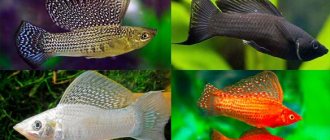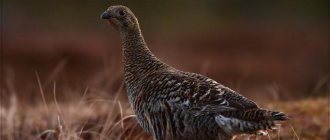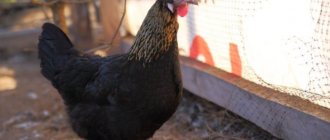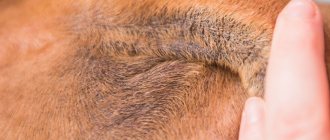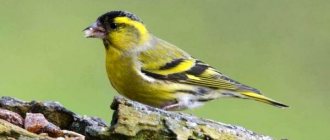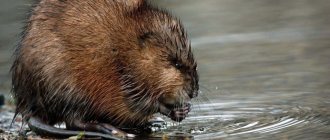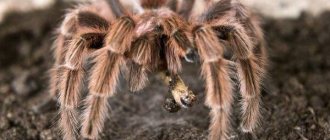Habitat
This type of spider is distributed throughout the world. They live in regions with temperate climates, incl. in the USA, Southern Europe, Asia, Australia, Africa and much of South America. Can be found in dark, dry shelters, dimly lit areas such as barns, garages, basements, closets, hollow tree stumps, rodent holes, and dense vineyard vegetation. They strive to hide in warm dwellings in winter.
Although previously the black widow spider was not known in Russia, in recent years they have been discovered in the Southern Urals and in the Rostov region. The migration is explained by an increase in air temperature.
An important characteristic of the black widow is its shaggy paw-crests. A row of strong, curved bristles is located on the back pair of legs and is used to pull the web over captured prey
Characteristic
Like all spiders, the black widow has 8 legs. Males and females are different. Females are twice as large, with shiny black organs and a red, hourglass-shaped mark on the underside of their round abdomen. The marking may also be orange-yellow. Males are paler, with red or pink spots on the back. Females are about 40 mm long with elongated legs, their black, spherical bellies are about 9-13 mm.
- An important characteristic of the black widow is its shaggy paw-crests. A row of strong, curved setae is located on the rear pair of legs and is used to pull the web over captured prey.
- The eggs are placed in greyish, silken balls 12 to 15 mm in diameter. The clutches contain from 200 to 900 eggs and are located in a web.
- The spiderlings are completely white at first. Then they become similar to adult spiders, although smaller in size. Photos of black widow spiders are easy to find in literature and the Internet.
- Their web is known to be stronger than silk. The black widow does not weave beautiful webs; instead, she makes thick webs and traps beetles, flies, grasshoppers, butterflies and other spiders in them.
Their web is known to be stronger than silk. The black widow does not weave a beautiful web, instead she makes thick webs and catches beetles, flies, grasshoppers, butterflies and other spiders in them
- The black widow spider, the photo speaks of their danger, still has enemies. Wasps can sting and paralyze them, and they are also a favorite food of praying mantises. Some birds will eat them, but may end up getting an upset stomach from the poison. Bright red markings on the belly warn potential predators that the spider is a nasty meal.
- Black widows are solitary in nature. They communicate only during mating. They can sometimes be seen hanging upside down in a net, identified by the hourglass on their abdomen.
- The black widow contributes to the balance of the ecosystem by consuming insects such as mosquitoes and flies. It also controls crop pest populations by feeding on insect pests that destroy plants: locusts, grasshoppers, beetles and caterpillars.
Interesting! There are 31 species of Black Widow, including: Latrodectus hersperus (Western Black Widow), Latrodectus mactans (Southern Black Widow) and Latrodectus variolus (Northern Black Widow). There are also red widows and brown widows.
The black widow spider, whose bite is dangerous and whose venom is 15 times stronger than that of a rattlesnake, fortunately rarely attacks people. Only when a person disturbs his peace. Only female bites can be considered a threat to human health
Karakurt habitats
The spider makes its home among stones, dry branches, in the top layer of soil, often in other people's burrows, closing the entrance with trapping nets made of randomly intertwined threads.
He likes to settle on untouched lands, including virgin lands, slopes of ravines, wastelands, and banks of irrigation ditches. Haymaking, plowing of steppes and cattle grazing sharply reduce the number of karakurt.
Adult spiders also die from insecticides used to pollinate farmland. True, chemical reagents do not affect cocoons: they can only be burned with fire.
With the onset of autumn, black widows, who prefer a nocturnal lifestyle, move closer to warmth - to basements, sheds, cellars, outdoor toilets, houses and apartments.
In its quest for comfort, the spider climbs into shoes, linen, bed, and kitchen utensils. And this is a direct threat to human life.
Black widow bite
The black widow spider, whose bite is dangerous and whose venom is 15 times stronger than that of a rattlesnake, fortunately rarely attacks people. Only when a person disturbs his peace. Only bites from females can be considered a threat to human health. And, contrary to popular belief, most victims do not suffer serious harm. Bites from this spider rarely lead to death. Risk groups include children, the elderly, and the sick.
After a bite, similar to a pin prick, the pain spreads throughout the body within a few minutes. The effects of a bite from one of the members of this genus depend on the species, but symptoms may include nausea, profuse sweating, severe abdominal and back pain, muscle pain, hypertension, and difficulty breathing. The pain lasts for 8-12 hours, and symptoms are felt for several days. It is advisable to use an antidote. Animals more often suffer from the bite of a male.
Like many spiders, the black widow eats other arachnids and insects that get caught in its webs
Why are black widow spiders dangerous?
Why are black widow spiders dangerous? The black widow spider is one of the most dangerous spiders on Earth. Its bite poses a fatal threat to humans. Spider venom contains a substance that disrupts the functioning of the nervous system, disrupts the heart rate, causes convulsions, trembling, pain and dizziness. The maximum danger is the venom of the female spider, although the venom of the male is also dangerous to human health. It is worth noting that black widow venom is 15 times more deadly than rattlesnake venom! For information, after mating the female almost always kills her partner. It is for this reason that the spider received such a “talking” name among the people; the official name of the black widow is karakurt.
In appearance, the female is distinguished by a convex abdomen and glossy black color with red spots on the back. An adult insect can reach about 2 centimeters in length. Indeed, it is not easy to notice the karakurt or its web with masonry. It is easy to step on or damage the nest - then the widow will defend herself. Spiders love to settle in horizontal crevices - rock crevices, between logs and boards. The black widow can build its shelter in rodent burrows, cracks in the ground, entwining it with cobwebs. A characteristic feature of the web: it is horizontally stretched and completely randomly woven - not at all reminiscent of the ideal concentric network of most spiders.
As for the geography of karakurt settlement, spiders live all over the world, mainly in desert places, on the slopes of ravines, ditches, in steppes, and abandoned houses. On the territory of Russia, the black widow spider is extremely rare, but still lives. This spider was seen in Altai and in areas close to Asia, as well as in the Crimea and the Caucasus.
It must be remembered that the Black Widow does not attack a person herself, but in defense she can bite. The moment of the bite may not be felt, but after 10 minutes severe pain appears throughout the body. Symptoms of a karakurt bite: pain in the lower back, abdomen, chest, shallow breathing, dizziness, often vomiting, cramps in the arms and legs, red rash on the skin. If measures are not taken in time, the person will die in 7 days, the child - in 5 days.
As an effective antidote measure, it is recommended to cauterize the wound within a minute after the bite, in which case the spider’s venom will stop working. To do this, you need to place the head of a match at the site of the bite and light it with another match. After this, you need to urgently contact a medical professional. institution.
Nutrition
Like many spiders, the black widow eats other arachnids and insects that get caught in its webs. The female hangs upside down and waits for her prey. This posture displays bright markings that are a warning to potential predators that it is toxic. The markings, however, do not scare the prey.
The spider eats flies, mosquitoes, midges, beetles and caterpillars. Once prey is caught in the net, the black widow uses its comb-like legs to wrap the prey in silk. Then it pierces its victim with its fangs and injects digestive enzymes that liquefy the corpse. And sucks out the liquid.
Interesting! Like most spiders, the black widow can live for a long time without food. Specimens have been known to survive for almost a year in the absence of prey.
Black widows are solitary all year round except during mating season. Young adults overwinter in buildings or in quiet outdoor areas. At the end of spring, after a long courtship, mating occurs. In some cases, the female kills her mate and begins to lay eggs
Life cycle
Black widows are solitary all year round except during mating season. Young adults overwinter in buildings or in quiet outdoor areas. At the end of spring, after a long courtship, mating occurs. In some cases, the female kills her mate and begins laying eggs.
Eggs
A grayish silk ball of eggs with a funnel-shaped exit is attached to the web. Each female builds from 5 to 15 such balls, 12-15 mm in diameter, each of which contains from 200 to 900 eggs. These clutches are fiercely guarded by the mother until spiders emerge from them.
Spiders (babies)
Young spiders emerge from the ball after 10-30 days. Only a handful of them will survive, as black widows are cannibals in the early stages of their lives. They consume other spiders from their brood for nutrients.
Older individuals die in the summer or autumn after laying eggs. New generation survives through winter
The surviving spiderlings undergo molting. At first they are white, then orange, and only after a couple of months they resemble adult male black widows. Surviving individuals leave the network. It will take 2-3 months for them to mature, begin to weave their cloths and get food.
Older individuals die in the summer or autumn after laying eggs. The new generation survives through the winter.
Interesting! Although the life expectancy of black widow spiders is one year, some females live up to three years. Males are usually only 1-2 months old. These spiders live longer in captivity.
Experts categorically do not recommend keeping a black widow at home or breeding it for non-professionals
Keeping at home
Some originals have all kinds of exotic animals at home and even try to breed them. Spiders were also among the chosen ones. In principle, keeping and feeding them is not difficult, there is a lot of information on the Internet, but getting offspring is already a problem.
As for the black widow, one of the most dangerous spiders in the world, experts categorically do not recommend keeping it at home or breeding it for non-professionals.
Chasing the exotic, you forget about the basic instinct of self-preservation. The result can be disastrous, because despite the shyness, 5% of attacks of such a pet end fatally.
The black widow produces a dirty, dense web. Her canvases are usually located near ground level and under protected overhangs, such as under furniture or a wooden porch on stilts. Red hourglass markings will also indicate the presence of this species
Description
An adult spider is black. Females typically have a red, hourglass-shaped spot on the underside of the abdomen and several red spots near the arachnoid warts and on the back. Immature females have red spots with a white outline on the abdomen. [ source not specified 93 days
] The body length of the female is 8-10 mm.
Adult black widow males differ from females in their small size (3-4 mm in length) and elongated abdomen (in females it is round). Their legs are painted with orange and black stripes, and there are red and white markings on the sides of their abdomen.
Young spiders are white or yellowish-white and darken with each subsequent molt.
Male
